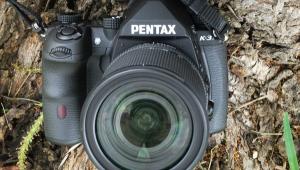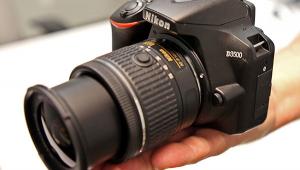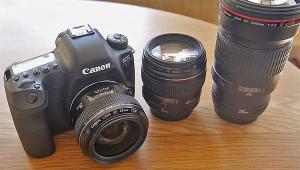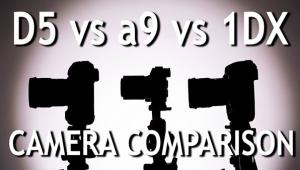I discovered your current this text while looking for a number of connected information about blog site search...Their a fantastic article..retain publishing and update the data. Karen Millen Ireland
Canon EOS Rebel T3i: A Legacy Line Continues
Rebels have always delivered good value wrapped up in a compact package and it’s why I personally own two—a Rebel XT and a Rebel XTi—both of them converted to infrared-only capture. The 18-megapixel EOS Rebel T3i is clearly an evolutionary model in the line, but owners of older Rebels should take a hard look at this new model because it clearly represents Canon’s new face as reflected in the previously released EOS 60D—the flip-out screen, in-camera filters, and all that jazz.
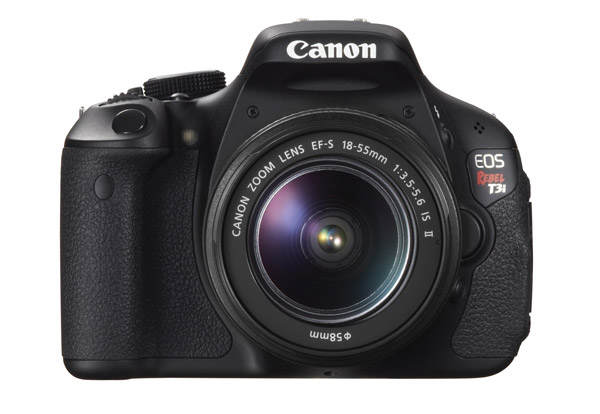

What’s New?
The Rebel T3i’s Scene Intelligent Auto mode provides scene analysis and optimized settings for proper exposures, making it a good first SLR for people moving up from point-and-shoot cameras. The 3” flip-out Vari-Angle LCD screen borrowed from the EOS 60D makes it easy for those overhead “Hail Mary” or down-low macro shots. The camera even has a built-in user’s guide that uses a Quick Settings Screen to show detailed descriptions of what specific camera settings accomplish; it’s set up so that beginners can take advantage of it, yet it’s never intrusive to the more experienced shooter.
Like any self-respecting SLR these days, the Rebel T3i has a Live View function that’s accessed with a single button, but new is an Aspect Ratio control that displays crop lines for 1:1, 16:9, or 4:3 formats in addition to the standard 3:2 ratio. There are even three Live View modes, including the obviously but not necessarily speedy AF Live that focuses during Live View display; AF “L” mode that will focus after face detection; and AF Quick which does focus quickly, but the Live View display stops—it goes black—if ever so briefly before making an exposure.

© Joe Farace
The old love-it or hate-it Green Mode on the Mode dial is gone, replaced with Scene Intelligent Auto technology, a rebranding of the old dial setting to a boxed “A+” design, and yes, it’s green. As part of the camera’s new Auto setting it now takes Picture Styles into account and Canon says the camera will “more intelligently analyze scenes and adjust settings based on the subject matter being shot.” That means when you’re photographing a person it will reproduce skin tones naturally or yield bluer skies for more vivid landscapes; a flashy red car will come out with more saturated color; and evening sunsets will have a more postcard-style rendering. All of this seemed to work for me. A new Quick Control button lets you navigate and change camera settings on that flip-out LCD, something Olympus SLR shooters have been able to do for years but now Canon owners can enjoy as well.
The new Rebel includes Canon’s new Creative Image Filters that are already familiar to PowerShot and EOS 60D shooters and that let you create a copy of a captured image before processing it using any of Canon’s five filter options. I’ve already covered these filters in my review of the EOS 60D but here are their names which pretty much tell what they do: Grainy Black and White, Soft Focus, Fish Eye Effect, Toy Camera a.k.a. a digital Holga effect, and the curiously-named Miniature Effect filter, which Canon says is “useful when shooting any scene from a high vantage point.” I don’t get it but if you look at my side-by-side comparison of the filters you’ll see it looks pretty good, even if its name makes no sense whatsoever. Each of the filters can be applied in camera to create a second filtered JPEG version, leaving the original file untouched—just in case.

© Joe Farace
For Video Shooters
The video capture capability of the Rebel T2i was pretty darn good and I know one iPhone still shooter who uses that older Rebel model just to shoot video clips! The Rebel T3i offers video capture at 1920x1080 resolution in selectable frame rates of 24p, 25p, or 30p and allows for three video recording modes, including Full HD and HD in a 16:9 aspect ratio and Standard Definition (SD) in a 4:3 aspect ratio, all at selectable frame rates. Of course, there’s an HDMI output jack and an external microphone jack that is a must if you’re really serious about video capture. None other than George Lucas has stated that audio is 60 percent of the video experience.
When shooting HD video, the Rebel T3i’s Movie Digital Zoom feature allows 3x to 10x magnification. Unlike digital zoom for still images, Movie Digital Zoom crops the video image directly from the CMOS sensor at Full HD resolution to preserve quality and provide additional power beyond what just the lens itself can produce. Canon says that it’s different from the mostly useless digital (still) zoom and it may just be. On the other hand, the camera’s Video Snapshot feature borrowed from Canon’s VIXIA line of camcorders lets you automatically record a series of 2-, 4-, or 8-second video clips and have the clips assembled in camera into continuous Video Snapshot Album files for playback.
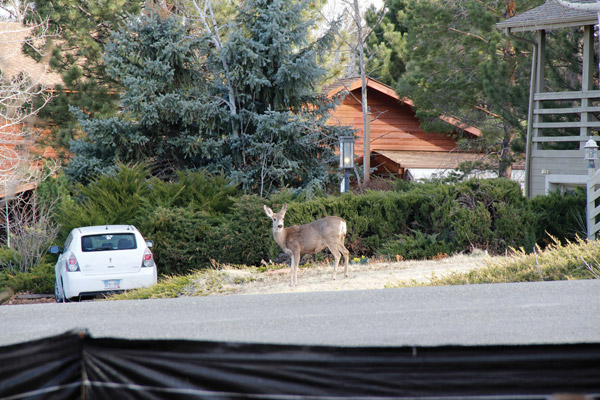

Photos © Joe Farace
For Still Shooters
In addition to an 18-megapixel Canon CMOS sensor, a DIGIC 4 Imaging Processor, a nine-point Autofocus system, and a 63-zone dual-layer metering system, the Rebel T3i can shoot up to 34 consecutive full resolution JPEG still images or up to 11 consecutive Raw images at speeds up to 3.7 frames per second to either SD, SDHC, or extended capacity SDXC memory cards. Like the T2i before it, the CompactFlash card used in previous Rebel models is a distant memory. I mostly used a 64GB Lexar (www.lexar.com) Professional 133x SDXC card for all of my testing and it performed flawlessly.
New is a built-in Integrated Speedlite Transmitter that makes it easier for beginners to do multi-flash shots, but my real-world guess is this is a feature that wedding photographers who are using the Rebel T3i as a backup will find useful. The built-in flash is pretty good as well for fill flash or adding just a touch of light, especially when shooting at higher ISO settings. The Rebel T3i digital SLR body-only configuration is $799.99, and it’s also offered in a kit version with Canon’s EF-S 18-55mm f/3.5-5.6 IS II zoom lens for $899.99. For testing Canon loaned me an EF-S 18-135mm f/3.5-5.6 IS lens ($450) that proved to be remarkably versatile.
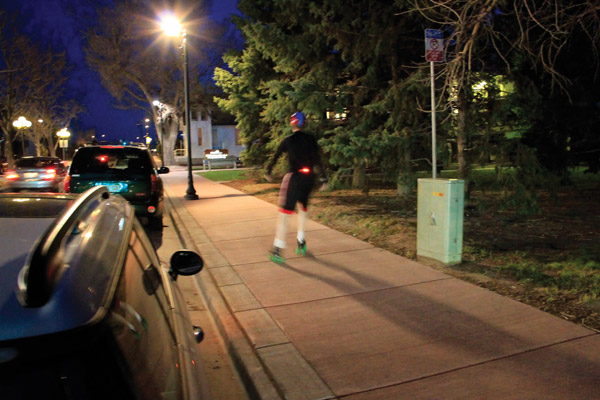
© Joe Farace
Into The Wild
My first road trip with the Rebel T3i was to Prospect, Colorado, whose colorful and eclectic architecture makes for great test subjects. It’s also where I ran into a touch of flare from the EF-S 18-135mm f/3.5-5.6 IS lens. No lens hood is included with the lens but Canon recommends the EW-73B ($29.95) that’s also used by the EF 17-85mm lens. Bargain hunters should know that Adorama (www.adorama.com) sells a generic version (LNHEW73B) for less than $10. This is one tough little puppy.
How good is the Rebel T3i’s image quality? I inadvertently gave it a test when I photographed a mule deer across the street from our home using the EF-S 18-135mm f/3.5-5.6 IS. As you can see by the left (original) image the deer takes up less than 1⁄20 of the space on the camera’s 22.3x14.9mm sensor, yet I was able to crop just part of the 17.28x11.52” using Photoshop’s Crop tool and its built-in bicubic resampling to produce a photograph that would have made an acceptable 11x17” print—maybe larger! The Rebel T3i delivers an honest ISO range from 100 to 6400 with no artificial “extended” settings and the image quality hangs in there at those high ISO settings. At ISO 6400 and long exposures there was some noise visible in sky areas, but it was relatively controlled using the default noise reduction settings. Applying postproduction noise reduction software such as Nik Software’s (www.niksoftware.com) Dfine almost but did not quite eliminate any noisy remnants. But the best part was having the flexibility to shoot what might be called nighttime street photography—without using flash.

Photos © Joe Farace
Not surprisingly, the Rebel T3i does not have a PC (Prontor-Compur) connection for a studio flash sync cord, but I wanted to see how the camera worked in a studio setting. Using the Flash Waves Wireless Synch Kit (www.boothphoto.com) which consists of a tiny transmitter that easily slips onto a hot shoe and an equally small receiver that plugs into the back of a Flashpoint (www.adorama.com) 620M monolight, I was ready for my first test shoot in the new studio. The camera worked perfectly and the EF-S 18-135mm f/3.5-5.6 IS was flexible in not only producing tack-sharp images but also in giving me cropping options, although I did crop the example you see here while maintaining the T3i’s exact aspect ratios. The Rebel T3i is truly one versatile little SLR.
I found the Rebel T3i to be—like all Rebels—an inherently honest camera that gives lots of bang for the buck. At $799 for the body only, this Rebel is certainly not as rugged as a $1699 EOS 7D but then again you’re not paying the same price. And based on the quality of images that I was able to extract from just a tiny part of the camera’s sensor, I’m guessing most Rebel T3i shooters will be quite happy with the results from their still images or video clips. The Rebel T3i is all about the fun of photography and if you’ve been reading me for any time you know that having fun is why I make pictures. Don’t you? Canon’s new Rebel T3i is a perfect partner for making fun happen.

© Joe Farace
For more information, contact Canon U.S.A., Inc. at: www.usa.canon.com.
- Log in or register to post comments


Thanks for sharing your insight on the the Canon EOS. I like the how the photo looks good during the night, Makes it easier for me to shoot indoor for my interior design projects.
Singapore Interior Designer
http://www.carpenters.com.sg/

It was a very good post indeed. I thoroughly enjoyed reading it in my lunch time. Will surely come and visit this blog more often. Thanks for sharing.
wholesale security cameras

It was a very good post indeed. I thoroughly enjoyed reading it in my lunch time. Will surely come and visit this blog more often. Thanks for sharing.
wholesale security cameras

Thanks for sharing such information, kindly do add more such interesting posts.
cooking games online
cctv systems

It is a great website.. The Design looks very good.. Keep working like that!.
visite site

The new Rebel includes Canon’s new Creative Image Filters that are already familiar to PowerShot and EOS 60D shooters and that let you create a copy of a captured image before processing it using any of Canon’s five filter options. best adjustable weights

Thanks for sharing such information, kindly do add more such interesting posts.

I think this is an informative post and it is very useful and knowledgeable. therefore, I would like to thank you for the efforts you have made in writing this article.cashadvance.
http://www.personalcashadvance.com/

This is a great inspiring article.I am pretty much pleased with your good work.You put really very helpful information. Keep it up. Keep blogging. Looking to reading your next post.
http://www.actionaffiliatesgreenville.com/

I'm quite glad to have seen this blog, thank you so much for all the great information on cameras and wonderful pictures, I'll be sure to pass the url on to my more artistic family and friends.birdhouses...
is allstate insurance expensive

I am usually to blogging and i genuinely appreciate your content regularly. This content has truly peaks my interest. I will bookmark your web site and maintain checking achievable details.


Thanks for sharing such Information...
http://bestadjustabledumbbellsset.blogspot.com/

Thanks for sharing such Information...
http://bestadjustabledumbbellsset.blogspot.com/

I am really like it very much for the exciting details in this weblog that to this web page is offering the amazing details in this weblog that to implement the excellent technological innovation in this weblog. http://www.naturalsunrisetour.com | http://www.rentalmobilharian.com

To Get setup your Microsoft Office Account. You just need to sign in to your Microsoft Office account by visiting office.com/myaccount.
https://www.office-com-setup.com/myaccount/


